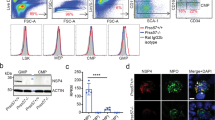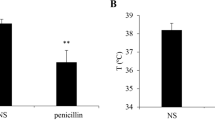Abstract
INFLAMMATORY reactions are characterised by hyperaemia, and exudation of plasma resulting in tissue swelling. Putative mediators of inflammation have usually been evaluated according to their ability to mimic inflammatory reactions1. Although prostaglandins were identified in inflammatory exudates2, and prostaglandin synthesis in vitro was shown to be inhibited by nonsteroid anti-inflammatory compounds3–5, prostaglandins (unlike histamine and bradykinin) were found to be poor at eliciting plasma exudation when injected into guinea pig6,7 or rabbit skin8. But, the finding that exogenous prostaglandins (notably of the E-type) potentiate plasma exudation produced by other mediators7–11 suggested that this may be the role of prostaglandins in inflammation. An alternative view has been proposed by Kuehl et al.12, who consider that since E and F prostaglandins fail fully to mimic inflammatory reactions, other products of arachidonic acid should be considered as mediators. They suggest that the unstable prostaglandin endoperoxide, PGG2, or a nonprostaglandin product of it (a free radical could be the important mediator. We have re-examined the mode of action of prostaglandins in inflammation by measuring both increased blood flow and plasma exudation. The results presented here suggest that the mediation of vasodilatation and increased vascular permeability should be considered separately. Prostaglandins (notably the E-type13,14) mediate vasodilatation (although they may have some additional mast cell degranulating activity in the rat15). It is this vasodilatation which is responsible for the potentiation of the exudation produced by other mediators. Our observations provide a new hypothesis for the microvascular mechanisms involved in the action of non-steroid anti-inflammatory compounds.
This is a preview of subscription content, access via your institution
Access options
Subscribe to this journal
Receive 51 print issues and online access
$199.00 per year
only $3.90 per issue
Buy this article
- Purchase on Springer Link
- Instant access to full article PDF
Prices may be subject to local taxes which are calculated during checkout
Similar content being viewed by others
References
Lewis, T. The Blood Vessels of the Human Skin and their Responses (Shaw, London, 1927).
Willis, A. L. J. Pharm. Pharmac. 21, 126–128 (1969).
Vane, J. R. Nature new Biol. 231, 232–235 (1971).
Smith, J. B. & Willis, A. L. Nature new Biol. 231, 235–237 (1971).
Ferreira, S. H., Moncada, S. & Vane, J. R. Nature new Biol. 231, 237–239 (1971).
Horton, E. W. Nature 200, 892–893 (1963).
Williams, T. J. & Morley, J Nature 246, 215–217 (1973).
Williams, T. J. Br. J. Pharmac. 56, 341P–342P (1976).
Moncada, S., Ferreira, S. H. & Vane, J. R. Nature 246, 217–219 (1973).
Thomas, G. & West, G. B. J. Pharm. Pharmac. 25, 747–748 (1973).
Lewis, A. J., Nelson, D. J. & Sugrue, M. F. Br. J. Pharmac. 55, 51–56 (1975).
Kuehl, F. A. et al. Nature 265, 170–173 (1977).
Berström, S., Duner, H., von Euler, U. S., Pernow, B. & Sjövall, J. Acta physiol. scand. 45, 145–151 (1959).
Solomon, L. M., Juhlin, L. & Kirschabaum, M. B. J. invest. Dermatol. 51, 280–282 (1968).
Crunkhorn, P. & Willis, A. L. Br. J. Pharmac. 41, 49–56 (1971).
Williams, T. J. J. Physiol., Lond. 254, 4P–5P (1976).
Williams, T. J. & Morley, J. Br. J. exp. Path. 55, 1–12 (1974).
Johnston, M. G., Hay, J. B. & Movat, H. Z. Agents Actions 6, 705–711 (1976).
Arturson, G. & Jonsson, C-E. Uppsala J. Med. Sci. 78, 181–188 (1973).
Ikeda, K., Tanaka, K. & Katori, M. Prostaglandins 10, 747–758 (1975).
Lewis, G. P., Westwick, J. & Willimas, T. J. Br. J. Pharmac. 59, 442P (1977).
Author information
Authors and Affiliations
Rights and permissions
About this article
Cite this article
WILLIAMS, T., PECK, M. Role of prostaglandin-mediated vasodilatation in inflammation. Nature 270, 530–532 (1977). https://doi.org/10.1038/270530a0
Received:
Accepted:
Issue Date:
DOI: https://doi.org/10.1038/270530a0
This article is cited by
-
Thrombin inhibitor from the salivary gland of the camel tick Hyalomma dromedarii
Experimental and Applied Acarology (2018)
-
Opposing roles of LTB4 and PGE2 in regulating the inflammasome-dependent scorpion venom-induced mortality
Nature Communications (2016)
-
Osteoarthritis: Pathology, Mouse Models, and Nanoparticle Injectable Systems for Targeted Treatment
Annals of Biomedical Engineering (2016)
-
The effect of intra-articular Tenoxicam on knee effusion after arthroscopy
International Orthopaedics (2015)
-
Phytochemical study, cytotoxic, analgesic, antipyretic and anti-inflammatory activities of Strychnos nux-vomica
Cytotechnology (2015)
Comments
By submitting a comment you agree to abide by our Terms and Community Guidelines. If you find something abusive or that does not comply with our terms or guidelines please flag it as inappropriate.



